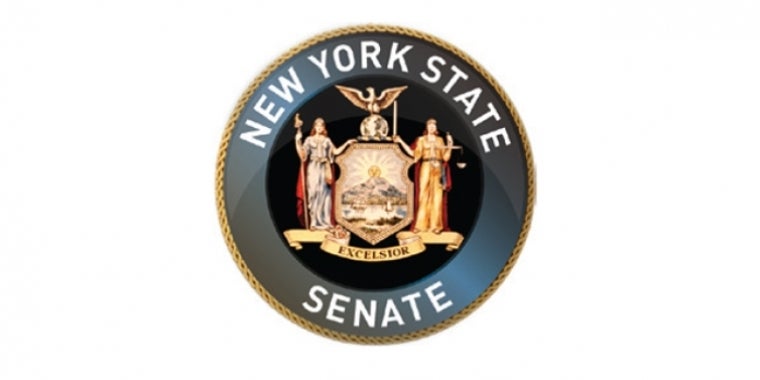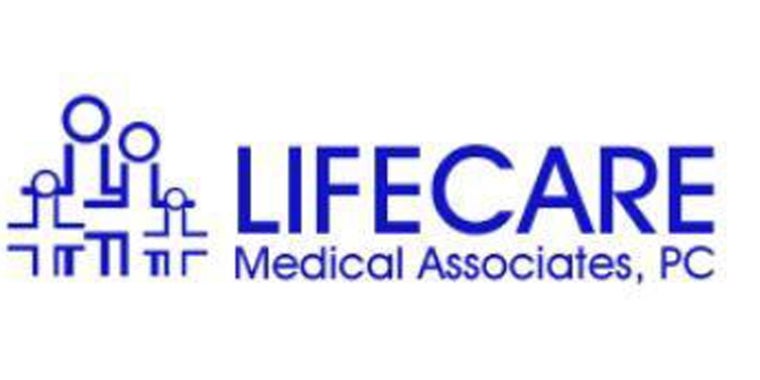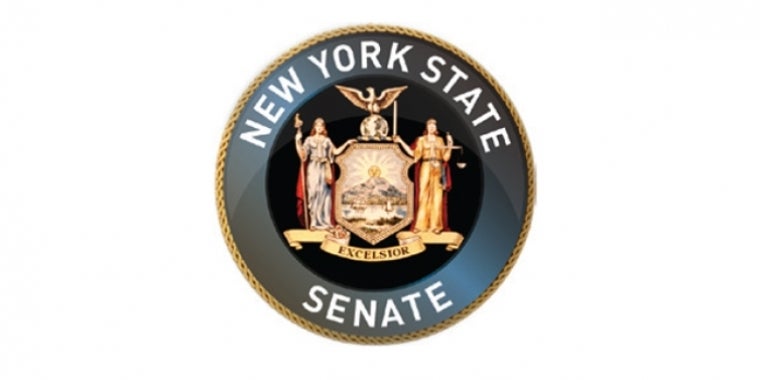
Education Update
Michael F. Nozzolio
April 15, 2015
-
ISSUE:
- Education
Many of you have contacted me to express your concern regarding the education policies adopted in the 2015-16 New York State Budget. As someone who shares a passionate belief in our teachers and our schools, and a deep personal and professional commitment to our children's future, I greatly appreciate the time and effort that many of you have taken to communicate your views about this important issue.
During my conversations, it was apparent there has been a tremendous amount of misinformation and understandable confusion regarding the education policies adopted in the new State budget.
First and foremost, I DID NOT vote to accept Governor Cuomo’s education proposals. My colleagues and I in the New York State Senate rejected the Governor’s misguided plan, and our bi-partisan efforts successfully averted the crisis that his plan would have created.
As you know, Governor Cuomo’s initial budget proposal included draconian measures that failed dismally to reflect our fundamental belief in the local control of our public schools. Moreover, the Governor’s plan did not respect the dedication and creativity of the teachers who serve the children in our community.
Throughout the budget process I voiced my concern with Governor Cuomo’s plan to further expand the state’s role in relation to our local school districts. My concerns were amplified when the Governor made the unprecedented decision and demand to imbed the actual language of his controversial education proposals in the state budget, and directly link the enactment of these measures to the distribution of school aid. An observer of this process, Capital New York wrote, “In effect, Cuomo is forcing the Legislature to choose between accepting his proposals and striking large portions of budget funding.”
The budget process is further complicated by the laws and court decisions of our State that give the Governor expansive and unprecedented power and authority through a legal mechanism called a "Continuing Resolution”. If the budget is not enacted by midnight, March 31st, Governor Cuomo has the authority to go far beyond funding the continued operations of government, by allowing him to jam into the budget substantial policy initiatives, including his draconian education plan. This simply means that if we did not have an agreed upon plan to avert this crisis, the Governor would have rammed through his proposals and the final budget would have decimated our education system. Make no mistake, Governor Cuomo had every intention of following through on his threat to do exactly that.
To summarize his original budget plan, Governor Cuomo made the following demands:
- Predicate the distribution of any state school aid on the approval of his education plan, exactly as it was submitted in his proposed budget. In effect, the Governor was insisting on a “my-way-or-the-highway” approach.
- Change the Annual Professional Performance Review (“APPR”) evaluation to increase the share of a teacher’s rating based on state tests from 20% to 50%.
- Require the use of independent observers from outside the school district to perform teacher evaluations (a step that would have been an incredibly expensive unfunded mandate).
- Increase the probationary period for a teacher to be given tenure from 3 to 5 years and restart the five year period if a teacher fails to receive an APPR evaluation rating of “effective” or “highly effective” during any one of those five years.
- Place 178 schools and 17 school districts across the state into receivership, thereby stripping them of local control and eviscerating the collective bargaining process.
While there are still aspects of the final New York State budget that I do not agree with, I believe that our efforts substantially altered Governor Cuomo’s education plan, and averted a further crisis. The final budget:
- Increases state school aid by $1.4 billion1 and provides school districts with an additional three months to develop their APPR plan.2 We defeated the strings attached to state aid that Governor Cuomo tried to impose.
1. S.4612-B contains language regarding appropriations. School Aid Runs can be viewed at the following link: http://publications.budget.ny.gov/budgetFP/2015-16SchoolAidRuns.pdf
2. S.2006-B pg 131 lines 35-36:
35 has submitted documentation that has been approved by the commissioner by
36 November fifteenth, two thousand fifteen
- Restores nearly 60% of the remaining Gap Elimination Adjustment (GEA) that unfairly cut state aid to our schools and we secured a commitment to completely eliminate the GEA in next year's budget.3 We in the Legislature worked together in a bi-partisan fashion to protect students, teachers and parents to take a giant step to finally eliminate the GEA that unfairly cut state aid to our schools. I vehemently opposed the GEA when it was first imposed several years ago, and the more than $600 million in this year’s budget will help achieve our goal of complete elimination.
3. S.4612-B pgs 8-12-- follow the link and scroll down to page 8: http://open.nysenate.gov/legislation/api/1.0/pdf/bill/S4612B-2015
- Directs the State Education Department (SED) to develop a plan, and submit it to the Legislature by June 1st, to reduce the amount of tests, the amount of time spent on test preparation, and the unnecessary anxiety these tests are causing students.4
4. S.2006-B pg 132 lines 21-36:
21 Section 1. Testing reduction report. New York families in many
22 districts are expressing significant stress and anxiety from over-test-
23 ing. The demands of state tests have been growing and there has been an
24 increase in the number of local tests. As a result, testing in many
25 districts has reached a level that is counterproductive and must be
26 addressed. On or before June 1, 2015, the Chancellor of the Board of
27 Regents shall submit a report to the Governor, the Temporary President
28 of the Senate, and the Speaker of the Assembly outlining recommendations
29 that shall help to: reduce the amount of state and local student test-
30 ing, improve the quality thereof, and thereby reduce test-related stress
31 and anxiety for students and educators. The report shall outline ways in
32 which any future testing in New York shall be implemented in a manner
33 that minimizes classroom preparation, student stress and student anxie-
34 ty. The Chancellor shall work with students, parents, educators, school
35 districts, and other relevant stakeholders in preparing the report.
36 § 2. This act shall take effect immediately.
- Requires the education professionals at the independent State Education Department to create a teacher evaluation system in consultation with parents,teachers and other stakeholders through a transparent process, with a required, in depth public comment period.5 The State Legislature removed Governor Cuomo’s requirement (or any other requirement) increasing the share of teacher ratings based on state tests.
5. S.2006-B pg 127 lines 7-25:
7 Section 1. Authority of the commissioner. Notwithstanding any
8 provisions of section 3012-c of the education law to the contrary, the
9 commissioner of the state education department, is hereby authorized and
10 directed to, subject to the provisions of section 207 of the education
11 law, adopt regulations of the commissioner and guidelines no later than
12 June 30, 2015, to implement a statewide annual teacher and principal
13 evaluation system in New York state pursuant to section 3012-d of the
14 education law, as added by this act, after consulting with experts and
15 practitioners in the fields of education, economics and psychometrics
16 and taking into consideration the parameters set forth in the letter
17 from the Chancellor of the Board of Regents and acting commissioner
18 dated December 31, 2014, to the New York State Director of State Oper-
19 ations. The commissioner shall also establish a process to accept public
20 comments and recommendations regarding the adoption of regulations
21 pursuant to section 3012-d of the education law and consult in writing
22 with the Secretary of the United States Department of Education on
23 weights, measures and ranking of evaluation categories and subcomponents
24 and shall release the response from the Secretary upon receipt thereof
25 but in any event prior to publication of the regulations hereunder.
6. S.2006-B pg 128 lines 40-48:
40 The commissioner shall determine the weights and scoring ranges for
41 the subcomponent or subcomponents of the student performance category
42 that shall result in a combined category rating. The commissioner shall
43 also set parameters for appropriate targets for student growth for both
44 subcomponents, and the department must affirmatively approve and shall
45 have the authority to disapprove or require modifications of district
46 plans that do not set appropriate growth targets, including after
47 initial approval. The commissioner shall set such weights and parameters
48 consistent with the terms contained herein.
- Eliminates the Governor’s proposed unfunded mandate that independent observers used for teacher evaluations must be from outside the school district7 and allows district administrators and -- for the first time ever -- peer teachers to serve as observers and evaluators of their fellow colleagues.8
7. S.2006-B pg 128 lines 55-56 & pg 129 line 1:
55 evaluators selected by the district. An independent trained evaluator
56 may be employed within the school district, but not the same school
1 building, as the teacher being evaluated.
8. S.2006-B pg 129 lines 1-4:
1 Such category may also include
2 a subcomponent based on classroom observations conducted by a trained
3 peer teacher rated effective or highly effective from the same school or
4 from another school in the district.
- Allows local school districts to reduce testing by waiving the APPR’s local
testing component.9
9. S.2006-B pg 128 lines 26-39, lines 26-27 make it optional:
26 (2) For the optional second subcomponent, a district may locally
27 select a second measure in accordance with this subparagraph. Such
28 second measure shall apply in a consistent manner, to the extent practi-
29 cable, across the district and be either: (A) a second state-provided
30 growth score on a state-created or administered test under clause (A) of
31 subparagraph one of this paragraph, or (B) a growth score based on a
32 state-designed supplemental assessment, calculated using a state-provid-
33 ed or approved growth model. The optional second subcomponent shall
34 provide options for multiple assessment measures that are aligned to
35 existing classroom and school best practices and take into consideration
36 the recommendations in the testing reduction report as required by
37 section one of subpart F of the chapter of the laws of two thousand
38 fifteen which added this section regarding the reduction of unnecessary
39 additional testing.
- Reduces Governor Cuomo’s proposed probationary period for new teachers to four years,10 and eliminates the Governor’s plan to restart the whole probationary period if a teacher fails to receive an “effective” or “highly effective rating” during that time.11
10. S.2006-B pg 115 line 4:
4 for a probationary period of four years
11. S.2006-B pg 116 lines 23-27:
23 who have received annual professional performance
24 review ratings pursuant to section three thousand twelve-c or section
25 three thousand twelve-d of this chapter, of either effective or highly
26 effective in at least three of the four preceding years, exclusive of
27 any breaks in service;
- Provides both an opportunity and funding to underperforming schools to enable them to improve12 rather than requiring an immediate state takeover.13
12. S.2006-B pg 149 lines 20-25:
20 (c) Specific provisions. (i) For schools designated as persistently
21 failing pursuant to paragraph (b) of this subdivision, the local
22 district shall continue to operate the school for an additional school
23 year provided that there is a department-approved intervention model or
24 comprehensive education plan in place that includes rigorous performance
25 metrics and goals
13. S.2006-B pg 149 lines 46-50:
46 (ii) For schools designated as failing, but not persistently failing,
47 the local district shall continue to operate the school for two addi-
48 tional school years provided that there is a department-approved inter-
49 vention model or comprehensive education plan in place that includes
50 rigorous performance metrics and goals
Recognizing the State Legislature’s work to protect our teachers and local control of our school districts, the president of the state’s largest teachers union claimed victory for teachers in the budget process. He stated that the budget will “immediately increase state aid to schools, provide that teachers are evaluated on more than a single student test score and ensure local oversight of struggling schools.” Further, he said, “Governor Cuomo’s attempt to hold public education aid hostage… hasn’t worked so far, thanks to the Legislature and the thousands of parents and teachers who fought to protect their children and their schools.”
My special thanks to the many wonderful teachers, parents and education professionals that I have had the opportunity to speak with over the last several weeks. Their input on these critically important issues has been tremendously helpful.
Our work, however, is just beginning. Over these next two months we will need to work together to press the New York State Department of Education to address the concerns that have been raised. Together we need to insist the Department listen to the educators on the front lines teaching in the classrooms as these policies are formulated.
Your continued comments, suggestions and views are important to me and help me to better represent you in the State Senate. I welcome the opportunity to hear from you directly, should you have any further questions or concerns.
With best wishes.
Sincerely,
Mike Nozzolio
Senator, 54th District
P.S. I have recently been informed by the New York State Education Department (NYSED) that the public comment period for input on developing new teacher evaluation standards is now open. I strongly encourage you to let your voice be heard by emailing NYSED directly at: eval2015@nysed.gov .
Share this Article or Press Release
Newsroom
Go to Newsroom


